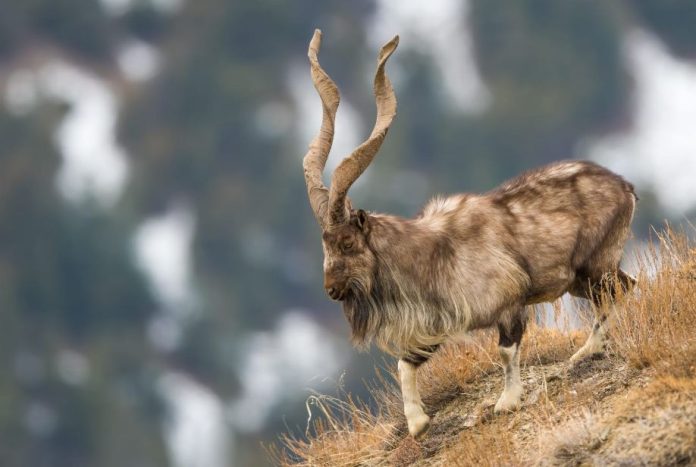ISLAMABAD: “With capacity-building programmes and engagement of local communities in conservation initiatives, a positive population trend has been observed in the Markhor species”. WWF-Pakistan stated this on World Makhor Day, appreciating the conservation efforts of local communities in Gilgit-Baltistan, Khyber-Pakhtunkhwa, and Balochistan. According to the organization, close coordination between conservation organizations, government departments, and local communities has resulted in an increase in the Markhor species and their habitat range in Pakistan.
In June 2024, WWF-Pakistan, in collaboration with Pakistan Post, issued stamps showcasing the Kashmir markhor. According to WWF-Pakistan, the markhor species in Pakistan faces numerous threats that jeopardize its survival. However, the involvement of communities has improved the habitat and population of these species. The markhor, declared the national animal of Pakistan, is a large wild goat species native to South Asia and Central Asia, mainly existing in Pakistan, India, the Karakoram range, parts of Afghanistan, and the Himalayas.
Since 2015, it has been classified as Near Threatened on the IUCN Red List. Often based on their horn configuration, markhor has been divided into five sub-species, namely Astor markhor, Bukharan markhor, Kabul markhor, Kashmir markhor, and Suleiman markhor.
Remarking on the day, Hammad Naqi Khan, Director General, WWF-Pakistan, lauded the efforts of local communities in the protection of the Markhor species and highlighted the need for transnational conservation efforts to safeguard their future. He emphasized reaffirming the collective commitment to protect the markhor species and its fragile mountain home. “Conservation is not just about saving a species, but it is about preserving our shared future in harmony with nature”, Khan added.
Markhors are highly adapted to steep, rugged cliffs, and dry temperate forests at elevations ranging from 600 to 3,600 meters. As herbivores, they graze on grasses, shrubs, and seasonal foliage and play a key role in mountain ecosystem health. Their elusive behavior and selective foraging patterns also serve as indicators of habitat integrity.
WWF-Pakistan urged that it is a time to highlight the ecological value of mountain ecosystems, raise awareness about conservation challenges, and honor community-led efforts that have helped save the markhor from the brink of extinction.

















